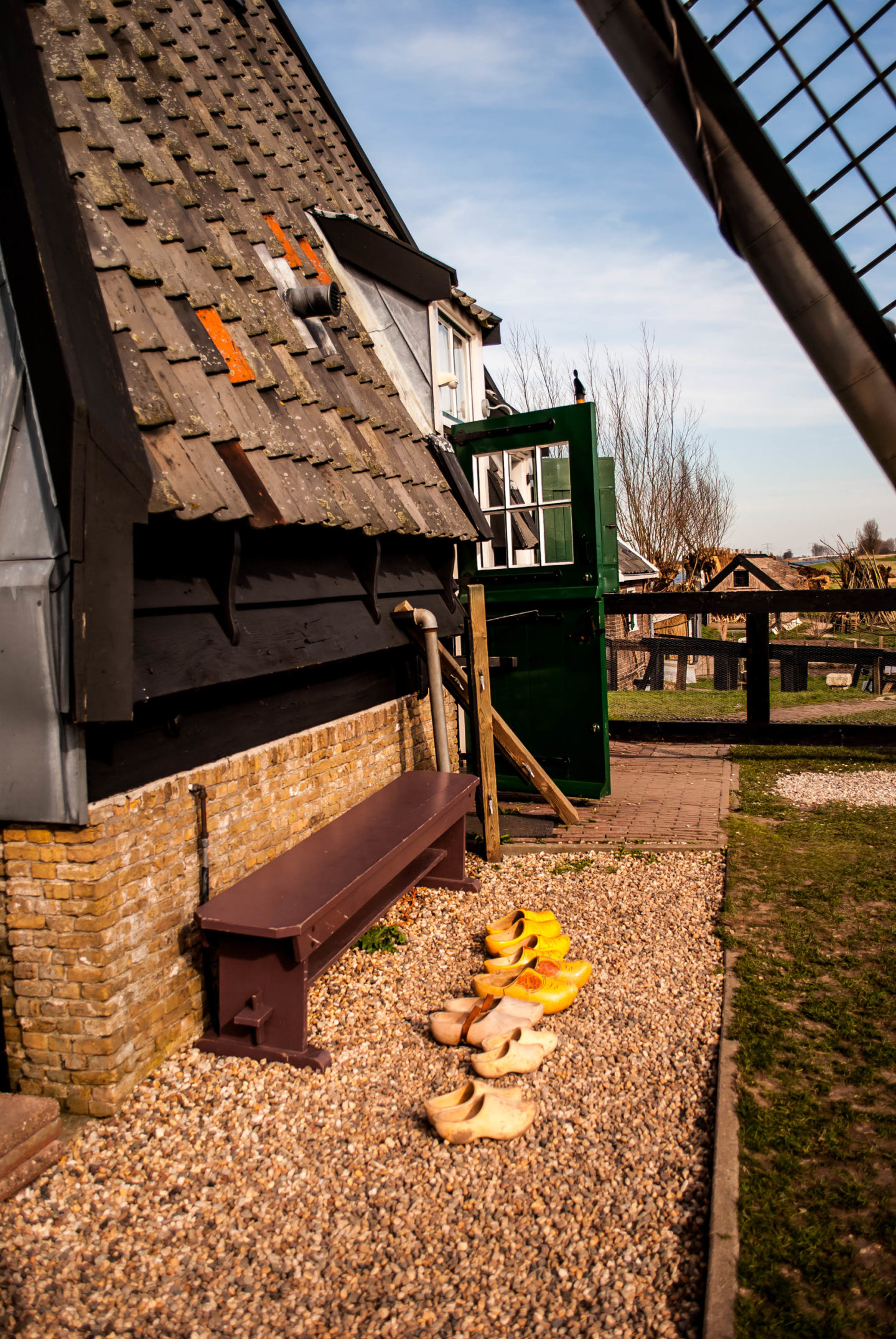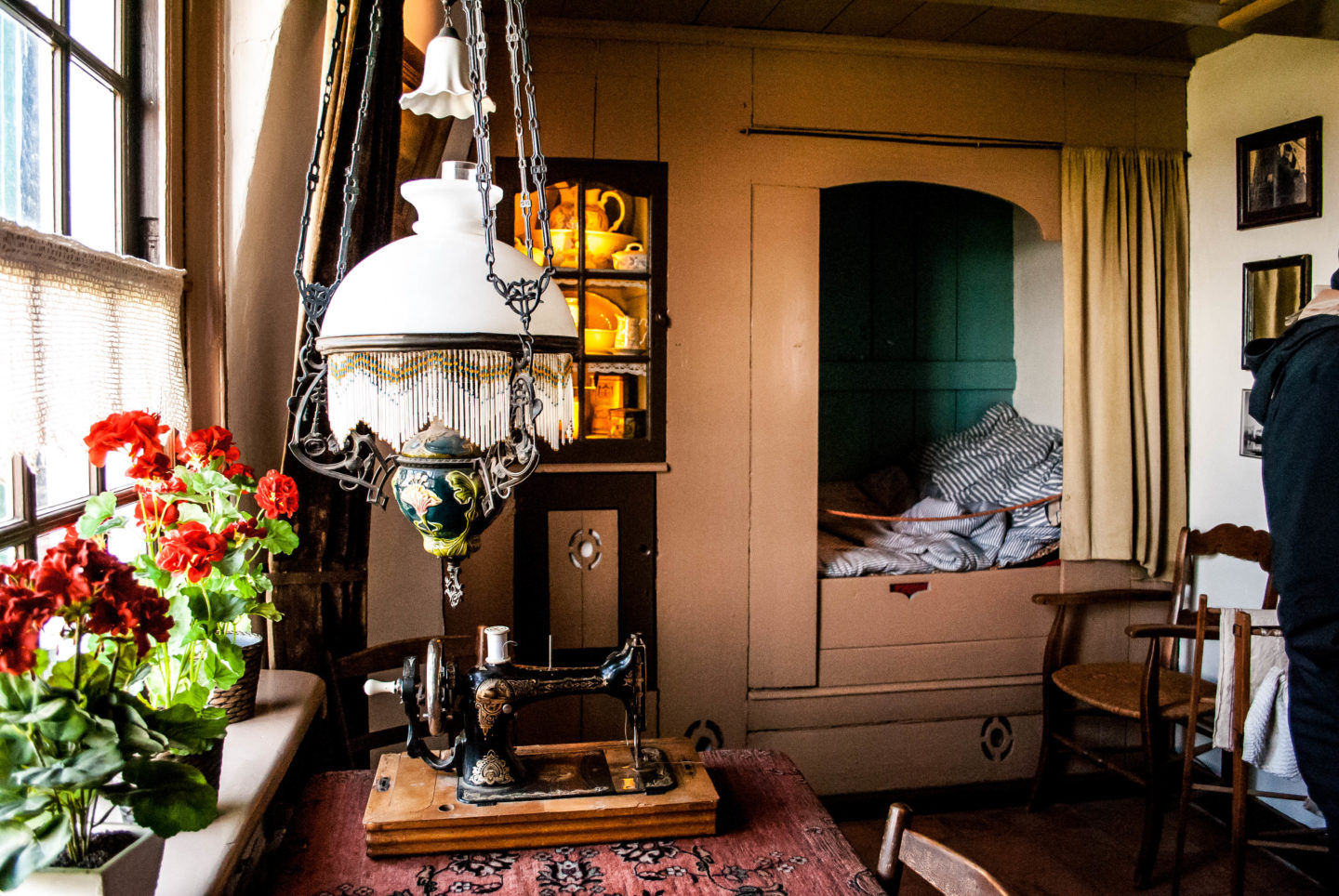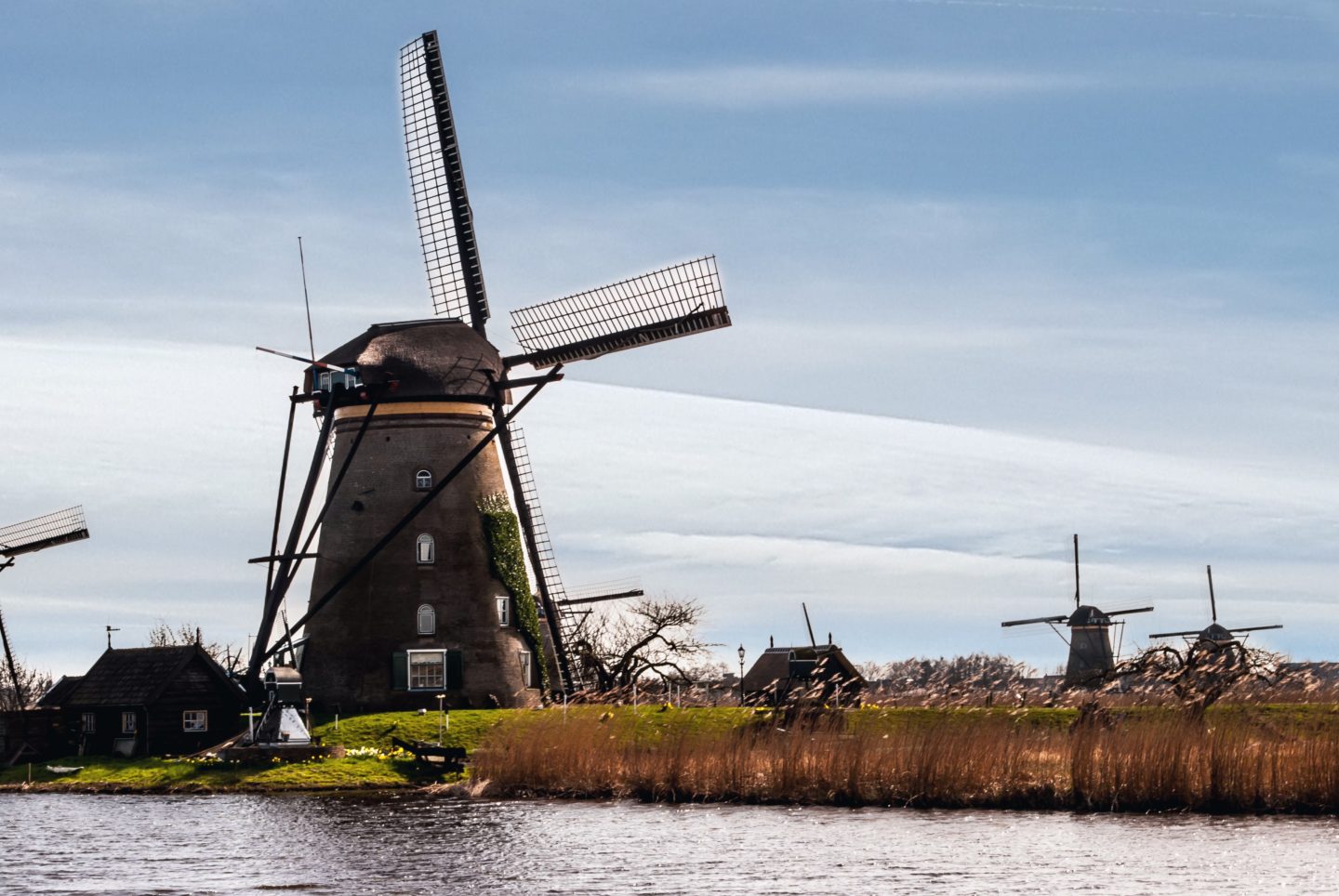I love a good open-air museum, and the windmills of Kinderdijk, just south of Rotterdam, did not disappoint. Being able to climb up inside one of the windmills, all the way to the top, was incredible. So should you make time to visit this UNESCO World Heritage site? Definitely.

What is Kinderdijk?
This area of South Holland is a microcosm of the Dutch struggle to keep their fertile farmland from flooding. Nearly 17% of the Netherlands is land reclaimed from the sea, through their ingenious dyke and windmill systems. The Kinderdijk (literally translating as ‘Children’s Dyke’) is one such area of farmland where 19 of the 20 historic windmills have been maintained and preserved. These windmills are still doing the job they were built to do, and must be kept in working condition in case the diesel-powered pumping stations lose power for any reason. So while this is an open-air museum, these incredible wooden machines are still an important part of keeping this area dry.

What are the windmills at Kinderdijk for?
When the Dutch people built the dykes this enclosed land for farming, but it was still flooded with water. The windmills (molen, in Dutch) power large Archimedes screws that pull water out of the farmland, and drain it into canals. Rain and natural groundwater seepage keeps threatening to drown the fields, or polder, requiring the windmills to keep the balance. In the event of a drought, the windmills can provide water from the canals as well.
For those of us not used to living near these magnificent buildings, we might be tempted to think of them as cute and small. Up close, they are huge, powerful, and very dangerous. A common hazard of living and working near the windmills was getting hit by one of the sails. I stood mesmerized by the whoomp-whoomp-whoomp of the passing sails, and shuddered at the thought. The power they can generate is tremendous.

What is there to do at Kinderdijk? Is it for kids?
The name ‘Kinderdijk’ is the name of the area itself, and it definitely is not just for children. The story goes after a terrible flood in 1421 that killed thousands of residents, a baby’s cradle was spotted floating on the flood waters, with the baby crying inside. The child was saved, and the area renamed the Children’s Dyke.
The museum is definitely family friendly, but on our visit we saw mostly adults visiting the area, so don’t be turned off if you’re not traveling with children.
There are 19 windmills on site, but you can only go inside two of them. There are two boat tours along the canal: one will take you on a full circuit, and one is a hop-on, hop-off affair. You can definitely walk all over, but the boat makes it quicker. Unsurprisingly for a place with 19 windmills, it is very, er, windy, so you might want a break from walking along the dykes.

Museum Windmill Nederwaard
This windmill was built in 1738, and one family lived and worked in it for many generations. At one point 13 children lived here! Inside, you can see how the living areas were set up, and climb the very steep staircases. You can climb into one of the beds built into the wall, and imagine if you could sleep with the sails spinning outside. It sounds like you’re on a ship, the way the creaking and groaning of the wooden gears and ropes carry on. And carry on constantly – all through the night and day. I can imagine you’d get quite used to it, even find it soothing.

All around there are photos of the Hoek family who lived in this windmill, along with clothing, dishes, and stories. It was impossible not to get a sense of the lively group of people who spent their lives here over hundreds of years. Sadly, one of the Hoek mothers died after getting hit by the windmill’s sails while chasing after one of her children. In one of the photos, all the children had shaved heads, which I can imagine was to combat lice… I don’t know how they managed to keep that under control in such a tiny and crowded living space.
I particularly loved this museum windmill, and how much the photos made me think of the people who lived there in their groaning and creaking home. My son loved getting into the bed, and poking his head up through the top floor to see the workings of wooden gears in the attic of the windmill.

Museum windmill Blokweer
This smaller windmill looks quite different than the other Kinderdijk windmills, because it was built in 1631, and has a movable top that can turn to face the wind. Outside, there is a chicken coop, vegetable garden, and a goat pen. Millers still needed to feed their families of course. There’s also an outdoor kitchen, where someone in costume was preparing food. There’s also a small gift shop and cafe next to Blokweer. Inside the mill, the kitchen is beautifully preserved and set up as though the owner has just stepped out. In the shed just adjoining the door, you can see a selection of wooden clogs hung up on rails. What is it about shoes that conjures up an image of their owners so immediately?


The other windmills
They may not be museum windmills, but you will notice by the windowboxes and curtains that people do still live in them! That’s why you’re not allowed to walk up to all of the mills on site.
Kinderdijk opening hours, ticket prices and how to get there
The Kinderdijk is open all year except December 25th.
January & February, 10am – 4pm
March – October, 9am – 5:30pm
November & December, 10am – 4pm
Ticket prices
Adults €7
Kids (4-12 years old) €4.50
Kids under 3 are free
Boat tours are €5.50 for adults, and €3 for kids, again under 3 are free.
Maps cost €1.
You can order all of these tickets ahead on their website, but you do have to choose which day you will be visiting. You save €1 per adult by booking online, so it’s definitely worth it, even if you just do it that morning.
Getting to Kinderdijk
Kinderdijk is a very easy day tip from Rotterdam.
You can drive to the Kinderdijk, as we did, but be warned that you will have to take a very short car ferry. It was a bit of a surprise to us, we came over the hill and there was the boat! It didn’t show up as such in the satnav.
From Rotterdam, it is a 30-minute journey on the WaterBus, and you can buy a combination ticket online here, which gives you a discount on entrance to Kinderdijk as well, though you will still need to buy a boat tour ticket when you arrive if you’d like to do that as well. The return ticket, is €11.70 for adults, and €8.55 for kids – this doesn’t include the entry fee, but upon showing your ticket you will get 20% off.





Fascinating that people still live in the windmills! I love how you describe one of them as feeling like a ship..I can picture that. The story of the mom dying chasing her child is really sad. I found this to be such an interesting post of something I virtually know nothing about. Thanks for linking up with #farawayfiles
Isn’t that story sad? That museum windmill has really stuck with me… I got such a strong feeling of the family that had lived there.